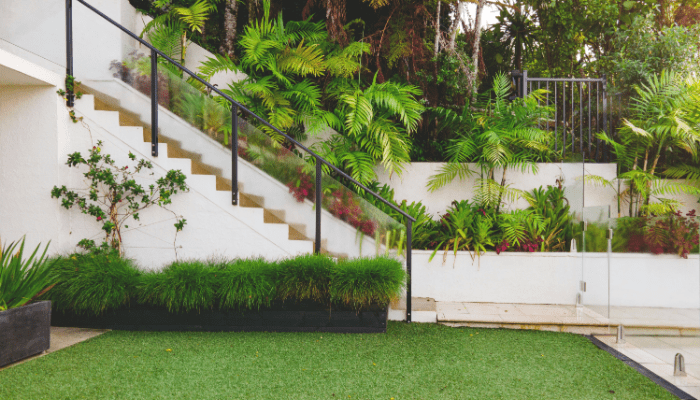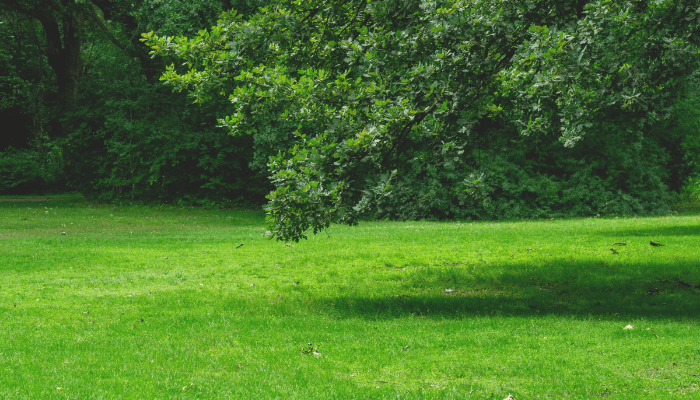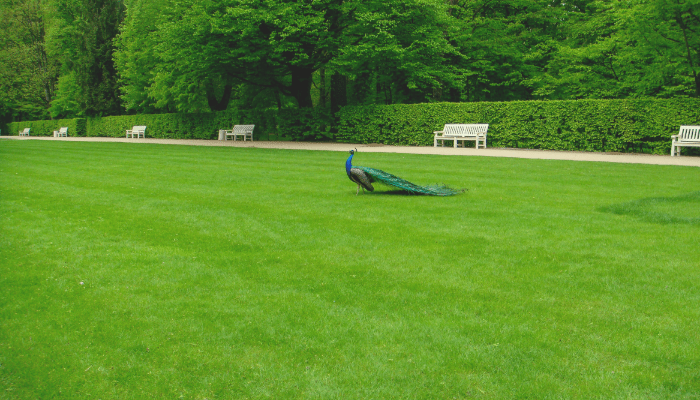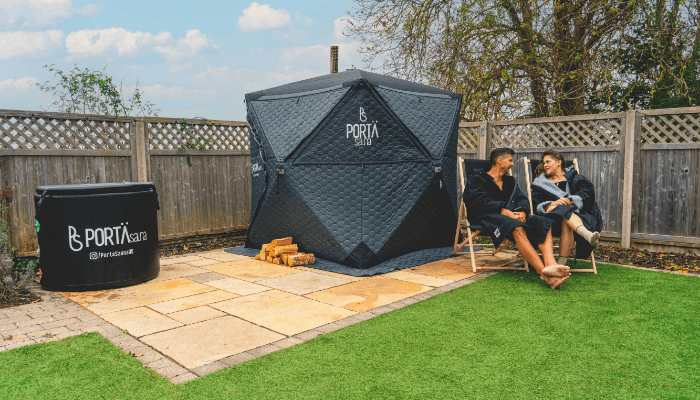Frankly, most people don’t have a lawn problem. They have a lawn ignorance problem. Harsh? Maybe. But if your grass is more patchy than your Wi-Fi signal, it’s time we fix that.
Creating a lawn that’s green, thick, and the envy of your block isn’t rocket science. But it’s also not just about tossing down some seed and praying for rain. Lawn care is both a science and an art, and I’m here to show you exactly how to master both without needing a degree in botany or a landscaper on speed dial.
In fact, most lawns fail because of just a few repeatable mistakes: wrong grass type, poor watering habits, overzealous mowing, and complete neglect of soil health. You’ll learn how to avoid all of them.
This guide is not for people who want a “meh” lawn. It’s for those who want thick, lush, walk-barefoot-in-the-morning-dew kind of grass. The kind of lawn that makes people slow down as they drive by. The kind of lawn that doesn’t just survive but thrives.
If that sounds like something you want, good. Let’s turn that sad patch of green into something that actually brings you joy. Because life’s too short for ugly lawns.

Key Takeaways
- Healthy lawns start with good soil and proper prep
- Choose the right grass type for your climate and sunlight
- Seed is budget-friendly, sod is fast where both need solid prep
- Water deeply and infrequently, not daily sprinkles
- Mow with sharp blades and never cut more than a third
- Fertilize 2 to 4 times a year based on real soil needs
- Control weeds, pests, and disease with smart prevention
- Tailor your care to the season for year-round results

Understanding Lawn Health Basics
A lawn isn’t just grass, it’s an ecosystem. And like any ecosystem, it thrives on balance. Healthy soil, the right grass type, consistent care, and proper timing. Most people forget that last part.
Grass doesn’t grow by force. It grows by design.
If you’re wondering why your neighbor’s lawn looks like a golf course and yours looks like a battlefield, start with this question: What’s under the grass?
The secret to a lush lawn starts underground. Healthy soil is loose, drains well, and teems with microbial life. Dead, compacted, or clay-heavy soil? That’s a death sentence for your grass.
Lawn health also depends on how much sunlight the area gets, the slope of your land, and your climate zone. If you’re planting Kentucky Bluegrass in the Arizona heat, you’re basically setting yourself up for failure.
Your lawn isn’t just a surface. It’s a living thing. Respect that, and you’re already ahead of 90% of homeowners.
Soil Preparation & Quality
Before you touch a seed or think about mowing, get to know your soil. I mean really get to know it, don’t just kick it and call it good.
Start with a soil test. Home kits work fine, but your local extension service? Even better. You want to know your soil pH (ideal range: 6.0-7.0), nutrient levels, and if you’ve got a sand, loam, or clay base.
Got compacted soil? Aerate it. Seriously. Use a core aerator, not those goofy-looking spike shoes. Aeration opens up the soil, allowing air, water, and nutrients to actually get where they’re needed.
If your soil feels like concrete in summer and soup in winter, mix in compost. Topdress with it. It boosts microbial life, improves drainage, and basically gives your soil a second chance at life.
The prep you do now pays off all year. Skipping this step is like painting a wall without primer which might mean it looks good for five minutes but then flakes off like a bad spray tan.

Choosing the Right Grass Type
Let’s not mess around: choosing the wrong grass is the #1 rookie mistake. If you don’t know what type of grass to use, you’re gambling your time and money.
Cool-season grasses (like fescue, ryegrass, Kentucky bluegrass) are your go-to if you live where winters are long and summers are mild. Warm-season grasses (like Bermuda, Zoysia, St. Augustine) love the heat but go dormant when it cools down.
Then there’s shade vs sun. Some grasses love full sun. Others will shrivel and die faster than a vampire on a beach.
Read the seed bag. Know your zone. Match the grass to your conditions. This alone makes your life ten times easier.
Seeding or Sodding: What to Use
Seed is cheaper. Sod is faster. That’s the trade-off.
Seeding lets you customize, mix varieties, and it’s easier on the wallet but it takes time, attention, and a little patience. You’ll need to water daily until it germinates, then taper off.
Sod is like an instant lawn transplant. Expensive? Yes. But you’ll have a mature-looking lawn in a week if you lay it right and water religiously. Just don’t lay sod on top of compacted soil and expect miracles.
Either way, prep the soil properly. Rake it smooth, remove debris, and water the area lightly before laying sod or spreading seed. Topdress with compost or peat moss if you’re seeding. And don’t forget to roll it lightly to ensure contact.
Watering Practices for Green & Thick Growth
Watering is where good lawns go to die. Most people either drown their lawn or starve it.
Here’s the golden rule: deep and infrequent. Aim for 2.5 cm to 3.8 cm of water per week, including rainfall. That’s about 30 to 45 minutes of watering, 2 to 3 times a week, depending on your soil.
Water early in the morning. Before 9 a.m. is best. Watering at night invites disease. Watering at noon is just you feeding the sun.
Use a tuna can or rain gauge to measure. Don’t just guess. And avoid the daily 5-minute sprinkle which encourages shallow roots, which leads to weak, thirsty grass.
Train your grass to dig deep. Roots follow water. If the moisture is down deep, your roots will be too.
Mowing & Trimming Best Practices
Mowing isn’t a chore, it’s a strategy. If you cut too short, you’re scalping the lawn and begging weeds to move in. Too tall, and it looks like a goat should be grazing it.
Follow the one-third rule: never cut more than one-third of the blade height in one mow. And keep your mower blades sharp. Dull blades tear the grass, leaving ragged tips that turn brown.
Most cool-season grasses like to be around 6 to 10 cm tall. Warm-season types can go a bit lower. Adjust accordingly.
Leave the clippings. They decompose fast and return nitrogen to the soil. It’s free fertilizer. Just don’t mow when it’s wet unless you like clumpy messes and muddy ruts.
Also: edge your lawn. Sharp edges make any lawn look 30% better. Science hasn’t confirmed that number, but your eyes will.
Fertilizing & Nutrient Management
Your lawn eats too. And it’s probably starving.
Most lawns need feeding 2 to 4 times a year. Spring and fall are prime seasons. Use a balanced fertilizer (something like 20-10-10 or 16-4-8) or one tailored to your soil test results.
Organic fertilizers build soil health long-term. Synthetic ones give a quick green-up but can burn the lawn if overapplied. Pick your poison, or better yet, use a hybrid approach.
Always follow label directions. More is not better. You’re feeding grass, not trying to grow Godzilla.
Pro tip: after fertilizing, water lightly to help nutrients soak in. And don’t fertilize during droughts, feeding a stressed lawn is like giving coffee to a dehydrated marathon runner.

Weed, Pest & Disease Control
If your lawn is weak, weeds will move in like they own the place. The same goes for pests and disease.
A thick, healthy lawn is your best defense. Grass that’s dense and well-fed naturally chokes out invaders. But let’s say things get rough, you’ve got options.
Use pre-emergent herbicides in early spring to stop weeds like crabgrass before they sprout. Spot treat dandelions or clover with a selective herbicide, or dig them out by hand if you’re feeling old-school.
Pests like grubs? They chew roots and wreck lawns fast. Milky spore, nematodes, or targeted grub control products can help.
Fungal diseases show up as brown patches, rings, or odd discoloration. Improve drainage, reduce night watering, and aerate. Most fungus issues are preventable with good habits.
Bottom line: prevention beats emergency fixes every time.
Seasonal Care: Spring, Summer, Fall, Winter
Lawn care isn’t one-size-fits-all year-round. Each season has its own checklist.
Spring is your reset button. Rake up debris, test soil, fertilize, and overseed any bare patches. It’s also the time to aerate and detach if needed.
Summer is all about survival. Mow high, water smart, and limit traffic. Don’t fertilize during heat waves, just focus on maintenance.
Fall is your growth season. Fertilize heavily, overseed, and water consistently. Roots grow deep in fall, prepping the lawn for winter.
Winter? Let it rest. Avoid walking on frozen turf. Don’t leave stuff (like furniture or toys) on the grass. Come spring, you’ll be glad you did.
Lawn care is about rhythm. Work with the seasons, not against them, and your lawn will reward you in green.

Conclusion
Look, grass doesn’t lie. It reflects how much (or how little) effort you’re putting in.
But here’s the kicker, you don’t need to become a full-time lawn nerd to have a great-looking yard. You just need a plan, a little consistency, and maybe the humility to stop mowing your grass like it owes you money.
To recap: test your soil, pick the right seed, water wisely, mow like you care, and feed it what it needs. No gimmicks. No magic. Just real, grounded lawn care tactics that actually work.
Your neighbors will notice. Your dog will love it. Your feet will thank you.
And you? You’ll finally look at your lawn and think, “Damn, I did that.”
Now get out there and make that grass proud.
Want experts help transform your lawn into a lush, green masterpiece? Oásis Biosistema offers professional landscaping and lawn care solutions that do the hard work for you, so you don’t have to guess your way to great grass.
FAQ
How to create the perfect lawn?
To create the perfect lawn, start by choosing the right grass type for your climate, ensure proper soil preparation, and maintain consistent watering. Mow regularly, following the 1/3 rule, and apply fertilizer seasonally. Aerate and overseed annually to keep your lawn lush, green, and weed-free.
What is the 1/3 rule for lawns?
The 1/3 rule for lawns means never cutting more than one-third of the grass blade’s height in a single mow. This helps prevent stress, promotes deeper roots, and improves lawn health. Following this rule encourages thicker, greener growth and reduces the risk of weeds and disease.
How to make a lawn grow better?
To improve lawn growth, mow properly, water deeply but infrequently, and fertilize according to the season. Aerate compacted soil and overseed patchy areas. Ensure your grass type matches local conditions. A healthy maintenance routine boosts root strength, enhances growth, and keeps your lawn green and vibrant.
Can I just put soil on top of grass?
Yes, you can topdress grass with soil to level your lawn or improve soil quality. Use a thin layer (¼ to ½ inch) of quality topsoil or compost. Avoid smothering the grass, spread evenly and water thoroughly. This promotes healthier growth and better nutrient absorption.



